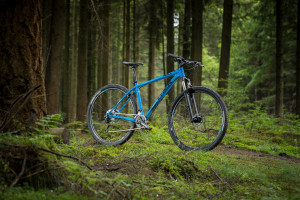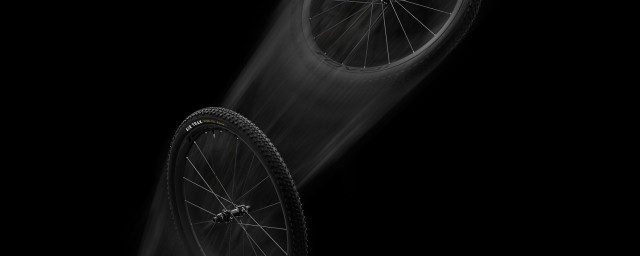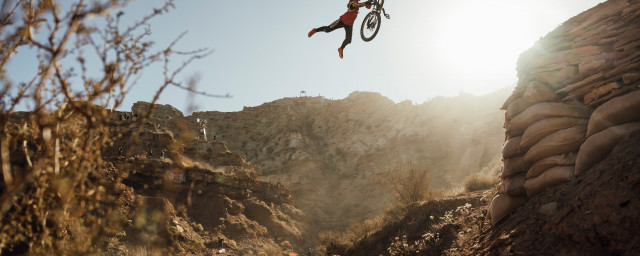The Ribble Gravel Ti is a gravel bike loaded with cargo mounts and targeted at those in seek of an adventure rather than a gravel race podium. While the bike delivers a good overall package and represents good value, it's lacking when it comes to ride feel, especially in the smaller frame sizes, which may affect its standing in the highly competitive best gravel bike segment.
- Titanium bicycles - everything you need to know
- 10 of the best titanium gravel and adventure bikes you can buy
- Is titanium the ultimate material for off-road bike frames?
Ribble Gravel Ti gravel bike - Technical details
Ribble's Ti Gravel bike boasts a titanium frame and lots of cargo-carrying capability: you get fork mounts, three bottle cage mounts and top tube mounting points, too. The frame of the Ti Gravel is constructed from 3Al/2.5V triple-butted titanium and features oversized tube profiles that Ribble says "enhance torsional stiffness for performance and add vertical compliance for the vibration-absorbing properties and compliant ride quality".
The frame is also loaded with cargo mounts, enabling the attachment of cargo or extra bottles and mudguard mounts for all-around-the-year riding.
In terms of components, the Enthusiast build we tested comes with a SRAM Rival AXS XPLR 1x12 groupset, complete with hydraulic, flat-mount disc brakes. This build sits in the middle of the range – there is also a slightly cheaper Enthusiast build with Shimano GRX 810, as well as a Sport model with Shimano GRX 600. At the top of the tree is the Pro model with a Shimano GRX 815 build.
The alloy Mavic Mavic Allroad Disc 700c wheels are tubeless-ready for a faster and smoother ride on chunky terrain. As a stock item, these wheels come wrapped in WTB Riddler Light/Fast 700x45c gravel tyres but, to suit my intended riding, I swapped them out for 40c Schwalbe G-One Allround rubber.
The finishing kit is all provided by Ribble's in-house brand LEVEL, including the aluminium handlebars, stem and a carbon/aluminium seatpost. The saddle is a Fizik Taiga but I changed this to a women-specific Selle Italia SLR Boost Lady Superflow (which costs an extra £60). The riser handlebars are also only available in limited widths and, because of my preference for riding narrower bars than the stock 42cm, I got the Level 6061 Alloy Road Bar in 38cm width instead. These changes are rather easy to make with Ribble's online customisation tool.
In terms of sizing and geometry, the Ti Gravel is available in six sizes from XX-Small (4' 11" - 5' 3") to X-Large (6' 0" - 6' 3"). I tested size XS frame which is recommended to my height (5'4") by Ribble.
The geometry of Ribble Ti Gravel is a little different from its other gravel bikes. The smallest sizes get quite a steep 75.5-degree seat tube angle (size XS) and a pretty conventional 70.5-degree head tube angle. The seat angle does get a little slacker on the larger frames, too. The frame has been designed to accommodate both 700c or 650b wheels, and the max tyre clearance is rated at 45c or 47c respectively.
My test bike's other crucial geo measurements included a 1,016mm, wheelbase, 381mm reach and 546mm stack. More on how these affected the handling in the next section,
Ribble's Gravel Ti gravel bike - Performance
I tested this bike for the first time on some of my true home trails in Finland, where I took part in the inaugural FNLD GRVL event with my sister. After the event, this titanium gravel bike travelled back to Scotland with me and I've been riding it on my other home roads for a few months now. In that time, I've got a good feel for the bike and, although I have liked riding it, it's left me wanting a little more. Not more mounts or tyre clearance, because those are abundant, but in terms of performance.
On smooth gravel in Finland, this bike was great because of its more road-orientated geo and the not-so-aggressive tyres, but once things got a little rowdier on the Scottish chunky trails, I started to wish for more stability from the bike. I would say most of this was due to the geometry of the bike and the small frame which can really compromise handling especially in terms of stability.
The reach on this bike is long enough – it is a good 10mm longer than the Gravel SL Pro I tested from Ribble. The bike also feels taller, which makes sense considering the bike's more relaxed riding intentions but it felt like I was sitting a bit too high and not planted. This is okay for flats and steady descents, but once speeds picked up the bike started to get twitchy, instead of tracking the ground with confidence.
Similarly, tight slow speed corners were okay, but on higher speeds and trying to power out of a corner, I didn't quite feel the bike would stay well in contact with the ground. I never lost contact, but that was likely because I slowed down more than I would have on a more stable-feeling bike - and perhaps on one with a longer wheelbase.
I think these feelings could be linked to the seat angle, as at 75.5 degrees, I think it's too steep for a gravel bike and almost akin to what I'd have on my racey road bike. This places you further forward on the bike, which might mean you're better placed on top of the bottom bracket, but on a drop-bar bike, you'd likely pair this with quite a low riding position - not something that this bike was intended for.
Titanium as a frame material is often praised for its vibration-dampening properties and compliance but the frame doesn't quite match those of other titanium bikes I've tested. I can't fault the material itself: in the months of testing, I had no issues with its durability and titanium as a material is beautiful in how you can just buff off any scratches.
A bike's ride feel is affected by a myriad of aspects from its geo to the components. I think on the Gravel Ti, the small-frame geo hasn't quite been perfected. Compared to the Landrace Tupelo I rode (although it is an all-road bike, I rode it a lot on gravel) the Ribble wasn't as stable or planted and did not make me want to speed down descents – rather it made me, at times, overly cautious, especially on unfamiliar routes. That said, I am quite sure that the larger frames of this bike would ride very differently, as they look to have a more relaxed gravel geo.
Overall it was hard to find the right weight distribution on this bike. The seat angle made the bike more front-heavy meant the bike's handling was compromised especially on corners. This could be offset with more layback on the saddle, and perhaps a longer stem, too, but it's just evident that the frame design could be better for smaller riders, and a little longer wheelbase and slacker seat angle would make positive difference.
When it came to climbing, this bike is not a mountain goat - tipping the scales at 9.8kg it certainly isn't the easiest to make fly up any ascents. That said, this bike is targeted at exploring, not racing, so it makes sense it is not as rigid as some other gravel bikes might be. That is also evident in the build of the frame, which features an additional brace around the bottom bracket. Adding this could have hinted at the search for more strength, but when I asked Ribble, the company said: "It houses the internal dropper post cable. Allowing everything to remain internal. It also allows for a better cable angle, rather than trying to go through the BB shell, which could cause a poor cable line and therefore poor performance." And, adding a dropper to this setup would level up the adventure nature of the bike.
The slight softness in the ride feel might also be due to the alloy Mavic wheels which are hardly the lightest gravel wheels out there. Out of everything on this bike, if I were to upgrade one thing in the purchasing process, it'd likely be the wheels – Ribble offers Hope 20FIVE Pro 5 or Zipp 303 S sets as an option, too, although they would add £150 or £800 respectively to the price.
The SRAM Rival AXS groupset on the bike is great. It's reliable and pleasant to use with a very simple shifting mechanism. The gearing on the bike was also enough. The 40T chainring paired with a 10-44T cassette provided a good range even for steeper climbs.
The finishing kit is also easily upgradeable or customisable at the time of purchase using Ribble's customisation tool. Although I would not say they were massively impacting my overall experience with the bike, the aluminium handlebars could be swapped to carbon for more vibration dampening and the seatpost could be swapped to a full-carbon one (or even that dropper post that Ribble offers). One thing that I would swap immediately is the bar tape. The stock tape was very thin and definitely not as comfortable as a thicker gravel-specific tape would be.
Ribble's Gravel Ti gravel bike - Verdict
The full retail price of the Ribble Ti Gravel stands at £3,799, which for a titanium gravel bike, is very competitive, as they often come at a higher price tag and a promise to last a lifetime due to the anti-corrosive and scratch-resistent material used. It comes in at the price you'd expect to pay for a titanium gravel bike frameset. Many titanium framesets alone cost around £3,500, while some full builds go for as much as £7,499, like this Principia Gravel 22TiTAN.
The Landrace Tupelo that I tested costs £2,795 for the frameset only, which makes it a lot pricier than the Ribble, but I loved the stable geometry. A very close competitor to the Ribble Gravel Ti is the Sonder Camino Ti with SRAM Force AXS (£3,499). The Camino has a lot more gravel-orientated geo even on the smaller sizes and doesn't skimp on mounts either.
All things considered, it'd be a little ambitious to claim that the Ribble Gravel Ti offered excellent value as several aspects could be improved including the smaller frame's geometry and the basic wheels.
Overall, the Gravel Ti is a great titanium gravel bike if you are on a limited budget, not into racing and want something that will serve you a lifetime. It offers myriad mounting options, making it a great all-rounder and, although its geometry on the smaller sizes is not best for inspiring confidence, this bike tackles light gravel tracks and tarmac with ease.





















3 comments
This is the 2nd off-road.cc review where the reviewer claims to detect "softness" in a wheelset although running tubeless tyres at presumably low pressures. I dont believe it. Its like an audio review praising "warmth" in a piece of hifi equipment.
The geometry questions are more interesting. A comparison on Geometry geeks between 2 of the best handling gravel bikes (according to road.cc or its siblings) the XS Reilly gradient and the 51R Fairlight Secan 2., suggests the difference is mostly in the headtube (much taller) and Seat tube much shorter. Seat angle is somewhere between the 2 although closer to the more race oriented Gradient. The reach is within 3mm across all 3 bikes which suggests the Ribble is far more upright but without a corresponding reduction in reach.
Can't wait for the dropped seat stay fugly fad to be over already.